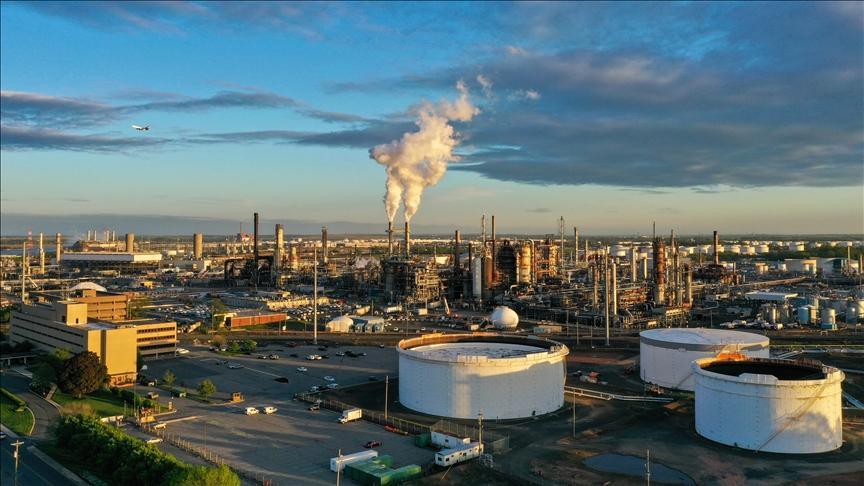Africa-Press – Tanzania. Price of Brent oil declined by 10% in 2023 affected by economic factors including sluggish economic activity in China, US interest rate hikes, and the turmoil in the banking industry despite upward supply side pressures and geopolitical tensions including ongoing the Russia-Ukraine war and recent conflict between Israel and Palestine.
Oil prices settled below $100 a barrel after 2022’s highs of around $139 a barrel, with first months of the year marked by tight supply fears as sanctions on Russia continued unfolding and major oil producing countries were reluctant to increase their productions.
International benchmark Brent crude, which recorded a 10% decline by the end of the year, opened at $85.96 a barrel in the first trading day on Jan 3, 2022, but closed the year at $77.4 a barrel.
The American benchmark West Texas Intermediate (WTI) fell by 11.2% last year. The WTI opened trading at $80.57 a barrel last January and closed the year at $71.65 a barrel.
Brent climbed to $97.69 a barrel on Sept. 28, while the WTI posted its highest price of $95.03 a barrel on the same day.
‘Tougher’ year expectations
On Feb. 1, Russia’s embargo on oil supplies to countries and businesses adhering to a Western-imposed price restriction took effect. The decree, signed by Russian President Vladimir Putin on Dec. 27, 2022, prohibited the supply of Russian crude oil and oil products “at all stages” if contracts directly or indirectly abide by the price cap.
On Feb. 5, sanctions on Russian oil products like diesel came into effect two months after the Group of Seven decision to cap the price of Russian oil at $60 per barrel and the EU ban on Russian seaborne crude exports on Dec. 5, 2022.
Experts had been warning about a “tougher” year over bearish expectations about the US, EU and Chinese economies, and a global economic recession.
China, the world’s largest oil importer and the second largest oil consumer country, was still struggling with COVID-19 pandemic-related travel restrictions after imposing strict pandemic measures for almost two years.
The country was expected to return to growth mode after lifting all pandemic restrictions, however its economy has been roiled by a spiraling real estate crisis, falling consumer confidence, deflation, skyrocketing youth unemployment, and the disappearance of foreign investment.
The Chinese government tried to prevent a deepening economic slowdown by ramping up stimulus in various sectors, including the property sector.
The official manufacturing data on Sunday showed manufacturing activity in the country shrank at a faster pace and more than expected in December.
Banking system failures fuel recession fears
The turmoil in the US financial system – which came at a time when central banks particularly in advanced nations were hiking interest rates to combat persistent inflation as countries across the world faced cost-of-living difficulties – put downward pressure on oil prices.
On March 12, US regulators shut down New York-based Signature Bank just two days after the failure of Silicon Valley Bank.
Fears of a spillover effect in the US banking sector crisis and its impact on oil demand outlook further put downside pressure on oil prices despite OPEC+ production cuts and US efforts to balance supply shortages by selling oil from its emergency stockpiles.
Barrel price of Brent dropped to $70.06 a barrel on March 20 and WTI to $63.64 a barrel on May 4, the lowest levels of the year.
Tumultuous year for OPEC+ as group loses Angola, wins Brazil
The year 2023 was a tough period for OPEC+ countries as the group suffered from problems with underperformance while also trying to keep oil prices under control with production cuts.
Prices remained mostly around the minimum price target of $80 a barrel as markets were focused on weak economic data throughout the year.
This has led the group to further deepen its production cuts, with Saudi Arabia shouldering most of the burden.
Since October 2022, Saudi Arabia has been contributing to the group’s joint cut of 2 million barrels per day (bpd) that will run until the end of 2024. Additionally, Saudi Arabia has led the way with cuts of 500,000 bpd starting in May as part of the collective cuts of around 1.6 million bpd.
Furthermore, the country announced in July another voluntary cut of 1 million bpd, which is set to expire this December.
On Nov. 30, several members of the OPEC+ group announced additional voluntary cuts of around 2.2 million bpd for the first quarter of 2024.
The voluntary cuts, which will be in place from January and March next year, will gradually end, subject to market conditions “to support market stability.”
The production cuts of the OPEC+ group failed to impact bullish market sentiment but rather supported price declines, as investors expected larger output cuts based on the predictions of the International Energy Agency, which signaled a supply surplus of almost 1.3 million bpd during the first quarter of next year.
The dissatisfaction of some group members over production quotas was evident throughout the year, resulting in Angola’s decision to leave the group, a move that is set to have a knock-on effect on other countries that are unhappy with the group’s plans.
Nonetheless, Brazil announced that it would join the OPEC+ group as of Jan. 1.
Experts voiced concerns over the possible knock-on effect of Angola’s decision that jeopardizes the fate of the group amid ongoing fears about its shrinking market share.
Fresh geopolitical tensions in Middle East threaten global trade
Fears of supply disruptions and rising tensions amid the Israel-Palestine conflict also failed to support price upticks.
In response to Israel’s relentless air and ground attacks on the Gaza Strip, Yemen’s Houthi group started to target ships owned or operated by Israeli companies “in solidarity with Palestine.”
The attacks disrupted global maritime trade and forced the world’s leading global shipping companies to reroute.
Several international companies including Italian and Swiss-owned Mediterranean Shipping Company, Denmark-based shipper Maersk, German shipper Hapag-Lloyd, and France-based shipper CMA CGM suspended all sailings in the Red Sea after security was compromised.
Connected to the Mediterranean by the Suez Canal, the Red Sea is the shortest shipping route between Europe and Asia.
According to the US Energy Information Agency (EIA), oil shipments via the route accounted for 12% of total seaborne-traded oil in the first half of 2023, and liquefied natural gas (LNG) shipments accounted for 8% of worldwide LNG trade.
Experts say the prolonged inability of the Suez to operate may pose economic threats for regional countries such as Egypt, whose economy is already fragile.
For More News And Analysis About Tanzania Follow Africa-Press







